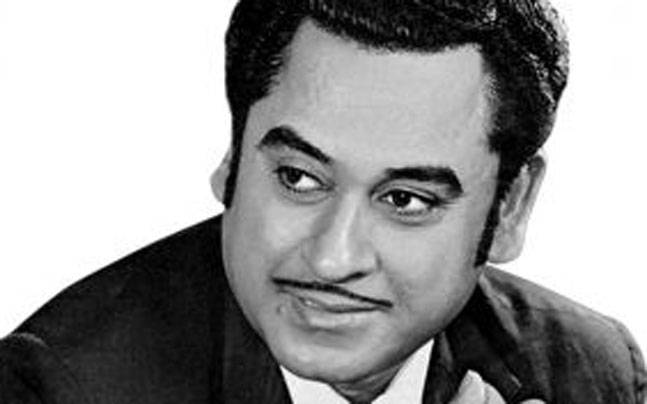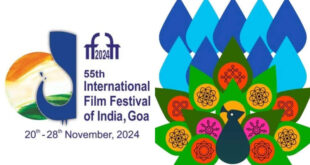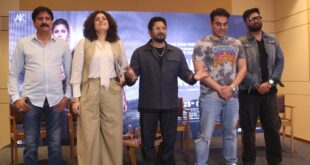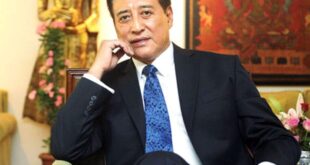Dr. Subhasis Ray
 Examples are galore where the entertainment industry is seen to be ruthless and unforgiving; a clear believer of ‘shelf life’, it can pass the entertainer to the oblivion as soon as the ‘use by date’ is over. Under such a volatile and competitive scenario, legendary singer Kishore Kumar is a bright exception. Listening to vividh bharti or FM channels or TV reality shows, it does not suggest any decline in his popularity by the sheer number of his songs played on a regular basis. During this glittering career, his first solo was Marne Ki Duayen Kyon Mangu, a composition by Khemchand Prakash for Ziddi in 1948 and his last recorded solo was Tum hi to woh ho, an unreleased song composed by Usha Khanna for a shelved movie called Khel Tamasha in 1987 barely 3 days before his death.
Examples are galore where the entertainment industry is seen to be ruthless and unforgiving; a clear believer of ‘shelf life’, it can pass the entertainer to the oblivion as soon as the ‘use by date’ is over. Under such a volatile and competitive scenario, legendary singer Kishore Kumar is a bright exception. Listening to vividh bharti or FM channels or TV reality shows, it does not suggest any decline in his popularity by the sheer number of his songs played on a regular basis. During this glittering career, his first solo was Marne Ki Duayen Kyon Mangu, a composition by Khemchand Prakash for Ziddi in 1948 and his last recorded solo was Tum hi to woh ho, an unreleased song composed by Usha Khanna for a shelved movie called Khel Tamasha in 1987 barely 3 days before his death.
It’s another story that this unreleased song was sold at a record figure of Rs. 15.6 lakh in an auction in New Delhi in 2012. Keeping oneself relevant for an entire span of 40 years is itself daunting; appealing newer generation of audiences for another 35 years posthumously builds a case for finer scrutiny. On his 35th death anniversary, this is a tribute by yours truly to this eternal Musafir who taught us Kabhi Alvida Naa Kehnaa.

Initial day (1948-1967) struggle of Kishore is well documented. He enjoyed little favour from the film fraternity even though he was the youngest brother of the then successful hero Ashok Kumar. In fact, Ashok Kumar wanted him to get established as an actor whereas Kishore’s forte and love were singing. Apart from Dev Anand, he did not get much opportunity to lend his voice to; so, he played for himself and presented gems like Chhota Sa Ghar Hoga (1954, Salil Chowdhury, Naukari), Haal Kaisa Hai Janaab Ka (1958, S.D. Burman, Chalti Ka Naam Gaadi), Ae Haseeno Nazneeno (1959, Madan Mohan, Chacha Zindabad), Zaroorat Hai Zaroorat Hai (1961, Madan Mohan, Manmauji) and many more. And when he was not getting many good compositions barring S.D.Burman, he started creating his own tune. His compositions like Main Hoon Jhumroo, Koi Humdum Na Raha and Thandi Hawa Yeh Chandni for Jhumroo (1961), Beqarar Dil Tu Gaye Jaa and Chalti Chale Jaaye Zindagi for Door Ka Raahi (1971) are some of his immortal creations. In 1964, he showcased his all-round talent with the acclaimed film Door Gagan Ki Chhaon Mein by playing the role of producer, director, music director, script writer, singer and even lyricist. He composed songs for stalwarts like Hemant, Lata, Asha, Manna – speaks volume of his ability.
His struggle ended with chartbusters like Mere Sapnon Ki Rani, Kora Kagaj Tha Ye Man Mera and Roop Tera Mastana in the film Aradhana under the tutelage of S. D. Burman in 1969. He received his first of a record haul of eight Filmfare awards for Roop Tera Mastana. The other seven are Dil Aisa Kisi Ne Mera (1976, Amanush, Shyamal Mitra), Khaike Paan Banaras Wala (1979, Don, Kalyanji Anandji), Hazaar Raahen Mudke Dekheen (1981, Thodisi Bewafai, Khayyam), Pag Ghungroo Baandh (1983, Namak Halaal, Bappi Lahiri), Agar Tum Na Hote (1984, Agar Tum Na Hote, Rahul Dev Burman), Manzilein Apni Jagah Hain (1985, Sharaabi, Bappi Lahiri) and Saagar Kinaare (1986, Saagar, Rahul Dev Burman). A platform built so strong was bound to pass the test of time.
The second reason for this ‘longevity’ seems his versatility in rendering songs irrespective of heros or music directors or genre. It was not easy to create a niche for oneself being pitted against singers like Rafi, Hemant, Manna, Mukesh, Talat or Mahendra. While Rafi, Manna and Mahendra were more into songs with classical base, Mukesh was termed as the tragedy king and Hemant and Talat were gifted with melodious voice and were kind of typecast with melodies. Being musically untrained probably helped him create his own grammar.
When we see his entire repertoire e.g. romantic (Bhul Gaya Sab Kuchh, Kya Yehi Pyar Hai), pathos (Yeh Dard Bhara Afsana hai, Zindagi Ka Safar), despair (Jaago Sone Walo, Dukhi Man Mere), inspirational (Ruk Jaa Na Nehi, Zindagi Aa Raha Hoon Main), machismo (Zindagi Ek Safar, Are Deewano Mujhe Pehchano) or ecstasy (My Name Is Anthony, Sara Jamana Haseeno Ka), it looks like a culmination of a man influenced by the works of K. L. Saigal, Rabindranath Tagore, Danny Kaye, Ahmed Rushdi, Frank Sinatra, uncle Dhananjay Bannerjee etc.
The range of his creations was diverse too including peppy western (Kisne Yahan Kisko Jana), devotional bhajan (O Jag ke Rakhawale), qawwali (Yeh Mohabbat Keya Karega), classical melody (Todke Bandhan Saare), Tagore like Panthi hoon main or the bangla song Manush Janmo Diye Bidhi – a conglomeration of bhatiali, western ballads, folk and eastern classical.
Thirdly, it will not be an exaggeration to say that he created a genre of his own using his acting prowess, power in his voice and unbundled energy. One needs to listen to Eena Meena Deeka (Aasha), C.A.T. Cat Maane Billi (Dilli Ka Thug), Ek Chatur Nar Karke Singaar (Padosan), Chil Chil Chilla Ke (Half Ticket) or the bangla number Sing Nei Tobu Naam Tar Singha (Lukuchuri) to believe it. However, his eccentricity was epitomized by Aake Seedhi Lagi Dil Pe (Half Ticket) where he sang a duet with himself – one being a female voice!! Not only had he bailed out the composer Salil Chowdhary on a day Lata was absent, but also cocktailed fun and joy of singing into cool contemporariness as early as in 1962. He added yodeling to his expertise by following Jimmy Rodgers and Tex Morton and used the same to great effect in many of his songs like no one did ever before or after in India.
Also Read : Mulayam Singh Yadav founder of Samajwadi Party dies at 82
Lastly, I want to mention one of his uncanny abilities i.e., voice modulation according to the actor and cinematic representation. Over the period of 40 years of his singing career, he played back for Ashok Kumar (18 years elder to him) to Govinda (34 years younger to him). Like their age, their acting and voice quality were varied too. One can hear his songs to decipher how he camouflaged his tonal quality to match a baritone or a soft voiced hero e.g. Rote Hue Aate Hai Sab (Amitabh Bachchan), Na Na Karta Hua Mera Yaar (Vinod Khanna), Phoolon Ke Rang Se (Dev Anand), Khilte Hain Gul Yahan (Shashi Kapoor), Aane Wala Pal (Amal Palekar), Kuchh To Log Kahenge (Rajesh Khanna), O Majhi Re (Jeetendra), Om Shanti Om (Rishi Kapoor), Tum Mile Pyar Se (Feroz Khan), Holi Ke Din (Dharmendra) and Ye Raatein Ye Mausam (himself).
I’ll end this tribute with a trivia. During 1974 puja, Lata and Kishore composed two bangla songs each for the other. Kishore composed Ki Likhi Tomay and Bhalobasar Agun Jwele whereas Lata created Aami Nei and Taare Aami Chokhe Dekhini – all super hit. I see it as a manifestation of mutual respect that the two tallest singers of India had for one another!!
(Dr. Subhasis Ray is a management consultant; can be reached at s_ray2013@hotmail.com)
 Jubilee Post News & Views
Jubilee Post News & Views





